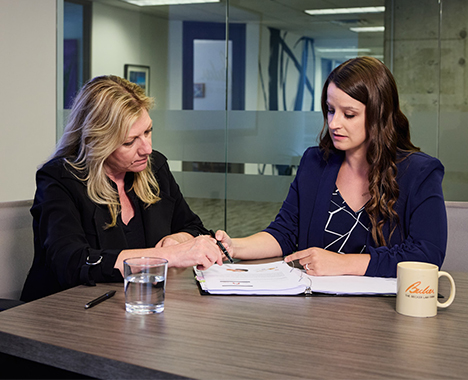Many pregnant women develop dangerously high blood pressure, a serious but highly treatable condition known as preeclampsia or pregnancy-induced hypertension (PIH).
If you or your child were harmed because obstetrical caregivers failed to correctly diagnose or treat preeclampsia, eclampsia, or PIH, contact the Ohio birth injury lawyers at The Becker Law Firm. We have a solid record of holding physicians and hospitals accountable for birth injury, infant death, and maternal death from pregnancy-related negligence.
Call 216-621-3000 or send a confidential online contact form to schedule your free initial consultation.
Risk Factors for Eclampsia and Preeclampsia
There are several risk factors that should place an obstetrician on notice that an expectant mother may develop preeclampsia.
Those risk factors include:
- Hypertension (high blood pressure) before pregnancy
- Obesity
- Preeclampsia in prior pregnancies
- Women younger than 20 or older than 40
- Pregnancy with more than one baby
- Diabetes
- Kidney disease
Additionally, complications of preeclampsia, eclampsia, or HELLP Syndrome can be life-threatening for both the mother and her developing fetus.
- HELLP Syndrome is an acronym that stands for Hemolytic anemia, Elevated Liver enzymes, and Low Platelet count. HELLP Syndrome is a severe variation of preeclampsia. The only treatment for HELLP syndrome is delivery of the baby.
- Severe preeclampsia, eclampsia, and HELLP Syndrome can result in stroke, brain damage, and even death in both the mother and fetus.
- Eclamptic seizures can result in an abruption or separation of the placenta from the uterus.
- Untreated preeclampsia is a leading cause of premature labor and birth, putting the fetus at serious risk of death or birth defects such as epilepsy, cerebral palsy, blindness, or deafness.
Proper maternity care and prenatal monitoring by doctors and nurses should allow early detection and treatment of these potentially life-threatening conditions. A competent obstetrician (OB/GYN) should closely monitor women at high risk of preeclampsia.
Symptoms of Eclampsia and Preeclampsia
Particularly after risk factors have been identified, obstetricians must carefully observe their patients for signs of preeclampsia. High blood pressure, excessive protein in the urine, swelling in the hands and face, headaches, blurred vision, and abdominal pain are all possible indications of preeclampsia.
Eclampsia, a severe form of preeclampsia, is identified by maternal seizures. These seizures can occur at any time—before labor (25%), during labor (50%), or after delivery (25%). Seizures occurring after delivery usually happen within 48 hours, however, they have been detected as long as several weeks after delivery.
Seizures are tonic-clonic, meaning that the woman’s body will tense up as she loses consciousness and then the body will convulse as muscles relax and contract in rapid succession. These types of seizures are often, though not always, preceded by an aura (lightheadedness, dizziness, unusual emotions, sense of foreboding, repetitive movements, for example).
Seizures can be difficult to detect, but when the symptoms are noticed, doctors should consider medication for blood pressure control and seizure control. Magnesium sulfate is often given, which must be carefully monitored. That drug can resolve the seizures but can also depress the central nervous system, cause loss of deep tendon reflexes, respiratory depression, paralysis, coma, or cardiac arrest. Without treatment, the pregnant woman can experience cerebral hemorrhage, aspiration pneumonia, blood clots, or hypoxic encephalopathy.
Delivery can only be considered after the seizure has ended. During a seizure, a baby’s heart rate may show dangerous decelerations, which obstetricians should treat by providing extra oxygenation to the baby. If those decelerations do not resolve, an emergency cesarean section is required.
Contact the The Becker Law Firm at 216-621-3000 for a free consultation.



